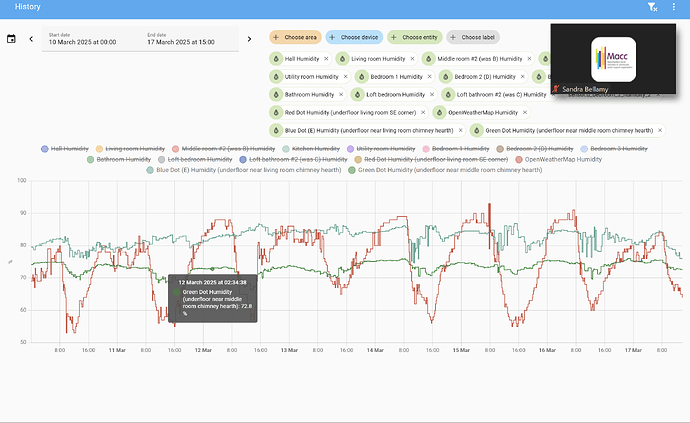Wouldn’t like to jump to conclusions after just 1 month other than we seem to be moving in the right direction. We might have been away for longer and left the house unheated for more days. Leap day in 2024 of course! And the known weaknesses of the degree days approach. We do have 8 rooms with fireplaces though
Oh dear. Do not buy this house without a full specialist moisture survey!
Oh, too late. Then I suggest a cowl for now. It should stop rain getting in and still allow the flue to vent off excess moisture. If the chimney is on an outside wall then fit a vent at the bottom of the chimney to allow a through draught to dry it out and then revisit the problem in a couple of years. You could fit a vent inside but then you need to allow for the lost air in your heating calculations.
I compared only the first 28 days of February 2024 ![]()
And the 8 fireplaces might account for a lot…
Thanks again Tim, for making me look about things slightly differently.
The chimney serving the front living room and bedroom above has no visible vents above or below floor, inside or out.
Whereas the chimney serving the ‘middle’ room & bedroom above has a curious circular opening below the floor, with a pile of earth(?) on the ground in front of it, plus a vent at floor level in the ‘middle’ room, plus a vent at floor level in the bedroom above.
Following the Great Rains at the turn of the year, surface water was seen below the living room floor, but none below the middle room floor (at least none that I could see).
The front living room has damp issues, but the ‘middle’ room has no apparent damp issues.
This set of sensors haven’t been in place very long but show humidity under ‘middle’ room lower than under front living room. Perhaps the chimney is ventilated and there is some kind of stack effect going on?
Your pile of earth like material is probably decayed ash and other detritus from the chimney. It seems likely that your chimney is indeed keeping the subfloor dry. This is important additional information when it comes to insulating your floor. If you block off that vent, which may originally have been to provide air to the fire, then the chimney becomes unvented and you will need to take measures to protect or remove it.
Just mentioned in a different feed. But i thought important to remember.
Chimneys on the external wall as opposed to in the middle of the house are more suseptable to moisture ingress, through the masonary. They might require more critical consideration.
It should be remembered that combustion of coal gives off hydroscopic salts. Therefore unused flues can draw humidity from the air and into the bricks. In addition removing three sides of the flue and incorporating the front or back into your wall leaves an area vulnerable to damp from the salt contamination. Salt treatments are available and usually end with plastering/rendering with special products.
If the same applies to other fuels please would someone add the information in another post.
